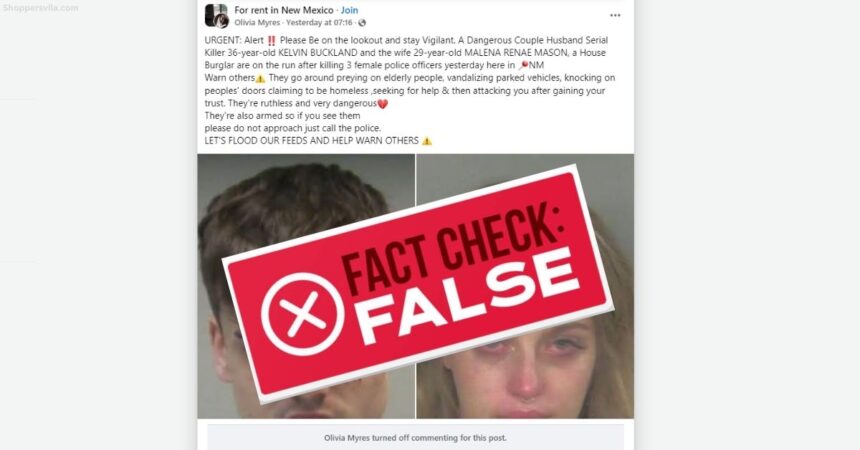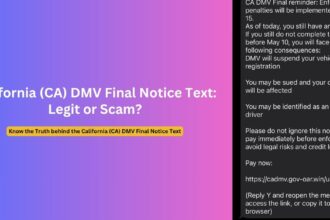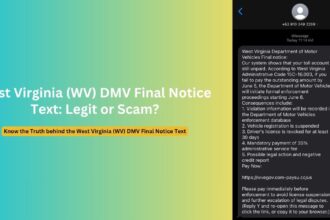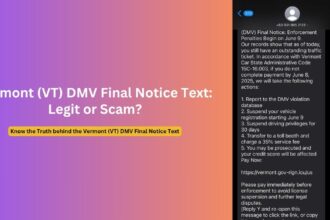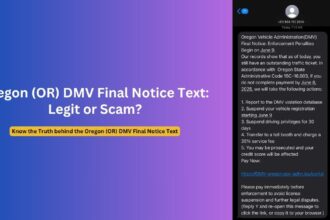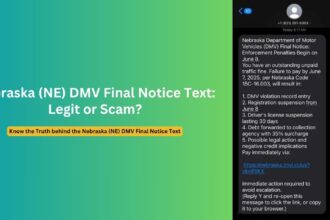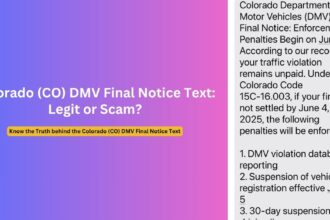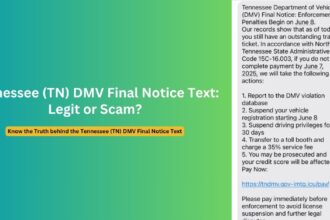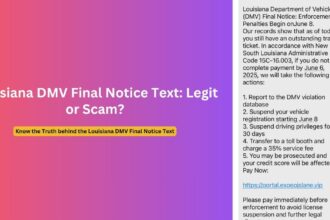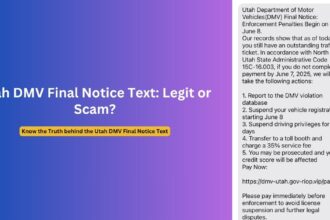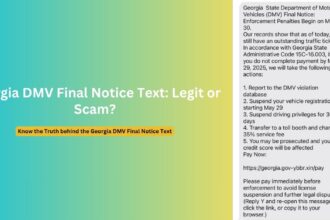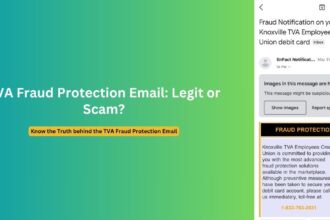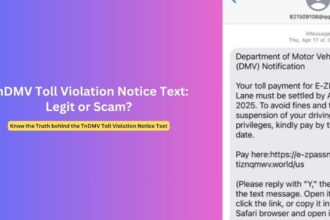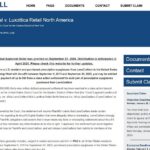A Facebook post warning about a dangerous couple—36-year-old Kelvin Buckland and 29-year-old Malena Renae Mason—allegedly on the run after killing three female police officers in New Mexico has been circulating widely across social media. The post urges people to be vigilant, claiming the couple preys on elderly victims, vandalizes vehicles, and attacks people after gaining their trust by posing as homeless individuals seeking help.
But is this warning legitimate or just another example of viral misinformation? Our investigation reveals this is part of a pattern of false claims spreading across social media platforms.
The Overview of a Viral Social Media Hoax, Kelvin Buckland and Malena Mason Wanted Story
The post about Kelvin Buckland and Malena Renae Mason follows a familiar template seen in numerous debunked hoaxes. These posts typically appear in local buy-and-sell Facebook groups and contain several common elements:
- An “URGENT” headline with demands to “lock doors” and “stay vigilant”
- Claims about a dangerous couple (usually named) who killed exactly three police officers
- Allegations that the couple targets elderly people or vandalizes property
- A claim that they pose as homeless people seeking help
- A call to “flood feeds” and share the warning
Fact-checking organizations have consistently found these posts to be false. The pattern is nearly identical each time, with only the names, locations, and photos changing.
Why These Social Media Hoaxes Spread So Easily
Several factors contribute to the rapid spread of these false warnings:
- Emotional triggering: The posts tap into fear and concern for community safety, prompting immediate sharing without verification.
- Localization: The posts are often tailored to mention specific communities, making them seem more relevant and urgent to local residents.
- Call to action: By urging people to “share” or “flood feeds,” the posts create a sense of civic duty to spread the warning.
- Appearance of legitimacy: The detailed descriptions and inclusion of photos lend an air of credibility to the claims.
- Group targeting: By posting in community groups rather than individual profiles, the hoaxes reach larger audiences who may already be primed to trust information shared in their local groups.
According to fact-checking organizations, these posts can damage people’s trust in legitimate community safety information. When groups become flooded with false warnings, genuine safety alerts may be ignored or dismissed as potential hoaxes.
The Real-World Impact of False Crime Warnings
While sharing a false alert might seem harmless or even helpful (“better safe than sorry”), these hoaxes can have serious consequences:
1. Public Fear and Anxiety
False crime alerts create unnecessary anxiety in communities. Elderly residents in particular may become fearful of answering their doors or interacting with strangers, potentially leading to social isolation.
2. Law Enforcement Resource Drain
When concerned citizens contact police about nonexistent threats, valuable resources are diverted from addressing genuine public safety issues. Police departments across the country have had to issue statements debunking these viral hoaxes.
3. Erosion of Trust in Legitimate Alerts
Perhaps most concerning is the “cry wolf” effect. When people are repeatedly exposed to false warnings, they may become skeptical of legitimate alerts, potentially ignoring real danger.
4. Damage to Community Relations
These hoaxes can also damage community cohesion by creating suspicion toward homeless individuals or strangers seeking assistance, further marginalizing vulnerable populations.
How Fact-Checkers Identify These False Warnings
Fact-checking organizations use several methods to verify the authenticity of crime warnings:
- Checking official sources: They contact local law enforcement agencies to verify if any such incidents have been reported.
- Cross-referencing names: They search criminal databases and news reports for the named individuals.
- Image verification: They use reverse image searches to determine if the photos have been misappropriated from unrelated sources.
- Pattern recognition: They identify similarities with previously debunked hoaxes.
In the case of the Kelvin Buckland and Malena Renae Mason post, these verification methods reveal no credible evidence supporting the claims. No legitimate news sources have reported on the alleged incident, and law enforcement agencies have not issued any alerts about these individuals.
The Broader Pattern of Social Media Misinformation
The Buckland-Mason hoax is not an isolated incident but part of a broader pattern of viral misinformation spreading across social media platforms. Fact-checking organizations have documented numerous similar cases:
- In January 2025, a nearly identical post claimed a couple named “Ryan Edward and Alice Chapman” had killed three female police officers in Castleford, Yorkshire.
- Similar posts have appeared in community groups across the United States, the United Kingdom, and other English-speaking countries.
- The same template has been used with different names, locations, and photos, but maintaining the core narrative.
These patterns suggest an organized effort to create and spread these false warnings, though the motivations behind them remain unclear. Some cybersecurity experts suggest they may be attempts to:
- Build engagement for pages that will later be repurposed
- Collect data on who engages with and shares certain types of content
- Test the effectiveness of different messaging strategies
- Simply cause disruption and erode trust in online information
Meta and other social media companies have been urged to take stronger action against these types of posts, but their prevalence continues to be a challenge.
How to Protect Yourself from Misinformation
To avoid falling victim to and inadvertently spreading false information online, consider these best practices:
- Verify before sharing: Check official sources like police department websites or legitimate local news outlets before sharing crime alerts.
- Question emotional content: Be particularly skeptical of posts designed to trigger strong emotional responses like fear or outrage.
- Look for the pattern: Be wary of posts following the “dangerous couple killing police officers” template described above.
- Check fact-checking websites: Organizations like Full Fact, PolitiFact, and Snopes regularly debunk viral hoaxes.
- Consider the source: Information shared in community groups without links to official sources should be treated with caution.
- Report suspicious content: Use platform reporting tools to flag potential misinformation to social media companies.
By taking these simple steps, you can help combat the spread of false information in your community and protect vulnerable individuals from unnecessary fear.
Fact Check: Is Kelvin Buckland and Malena Mason’s Story Real?
After thorough investigation by multiple fact-checking organizations, the viral story about Kelvin Buckland and Malena Mason can be conclusively labeled as FALSE.
Here’s the evidence disproving the claims:
- No police reports: Law enforcement agencies in New Mexico have not reported any incidents matching the description in the viral post.
- No news coverage: No credible news outlets have reported on the alleged murder of three female police officers in New Mexico, which would certainly warrant significant coverage.
- Pattern matching: The post follows an identical template to numerous other debunked hoaxes, only changing names, locations, and photos.
- No verification: The identities “Kelvin Buckland” and “Malena Renae Mason” as described in the post cannot be verified in criminal databases or legitimate news reports.
- Image analysis: Reverse image searches suggest the photos used in these posts are often misappropriated from unrelated sources or previous news stories.
Fact-checking organizations have documented dozens of nearly identical posts circulating in different communities, all following the same formula but with different names and locations. This pattern strongly suggests an organized campaign to spread misinformation.
The motivation behind these false posts remains unclear, though cybersecurity experts suggest they may be intended to:
- Test engagement algorithms
- Gather data on community responsiveness
- Build follower bases for pages that will later be repurposed
- Simply disrupt communities and erode trust in online information
What’s clear is that sharing such unverified warnings, even with good intentions, contributes to an information environment where distinguishing genuine threats from hoaxes becomes increasingly difficult.
FAQs About the Kelvin Buckland and Malena Renae Mason Hoax
1. Are Kelvin Buckland and Malena Renae Mason real people?
There is no credible evidence that the individuals named in the viral Facebook post exist as described. Law enforcement agencies have not issued any alerts about these specific individuals, and no legitimate news sources have reported on the alleged incidents.
2. Why do people create these false crime alerts?
The motivations behind these hoaxes vary. Some may be created to generate engagement on social media, while others might be designed to collect data on user behavior. In some cases, they may simply be intended to cause fear and confusion within communities.
3. How can I verify if a crime alert is legitimate?
Check official sources such as police department websites, verified social media accounts of law enforcement agencies, or reputable local news outlets. If a dangerous couple had actually killed police officers, these sources would certainly be reporting on it.
4. What should I do if I’ve already shared one of these false alerts?
If you discover you’ve shared misinformation, it’s helpful to delete your post and consider sharing a correction with your followers. This helps stop the spread of the false information and educates others about the hoax.
5. How can social media platforms better address these types of hoaxes?
Experts suggest that platforms could implement stronger detection systems for repeated content patterns, improve fact-checking partnerships, and develop better educational tools to help users identify potential misinformation before sharing it.
Conclusion
The viral warning about Kelvin Buckland and Malena Renae Mason is a clear example of false information spreading through social media channels. It follows an established pattern of hoax crime alerts that have been thoroughly debunked by fact-checking organizations.
While the impulse to share warnings about potential dangers may come from a place of genuine concern, it’s essential to verify information before amplifying it. By applying critical thinking and consulting official sources, we can all play a role in creating a more reliable information environment and protecting our communities from both real threats and unnecessary fear.
The next time you see an “URGENT” crime alert in your local Facebook group, take a moment to verify the information before hitting the share button. That small pause could make a significant difference in combating the spread of harmful misinformation.
